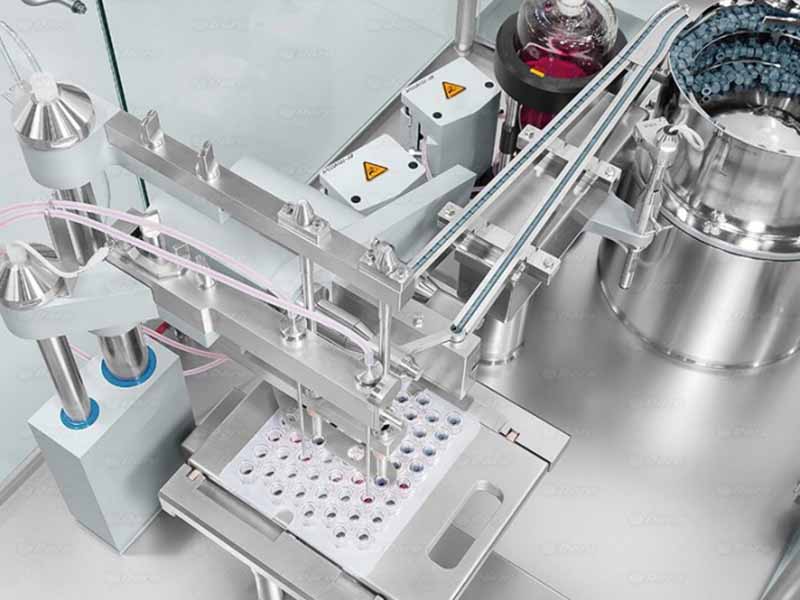In the pharmaceutical manufacturing industry, equipment performance is crucial for ensuring product quality, safety, and efficacy. Poor equipment performance can result in costly downtime, product recalls, and regulatory fines. Therefore, it is essential to implement tips and strategies to optimize equipment performance. In this blog, we will discuss some of the most effective tips and strategies for achieving optimal equipment performance.
1. Regular Maintenance and Calibration
Regular maintenance and calibration of equipment are essential for achieving optimal performance. It is recommended to establish a preventive maintenance program to ensure that equipment is maintained and serviced on a regular basis. This can include tasks such as lubrication, cleaning, and replacement of worn-out parts. Additionally, calibration should be performed at regular intervals to ensure that equipment is operating within the desired specifications.
2. Operator Training and Education
Operator training and education are critical for achieving optimal equipment performance. Operators should be trained on the proper operation and maintenance of equipment, as well as safety procedures. It is essential to ensure that operators understand how to identify potential issues with equipment and perform basic troubleshooting.

3. Standard Operating Procedures (SOPs)
Standard operating procedures (SOPs) provide a framework for consistent and reliable equipment performance. SOPs should be developed for each piece of equipment and should include details on proper operation, maintenance, and cleaning procedures. Additionally, SOPs should outline steps for troubleshooting common issues and provide instructions on how to handle equipment malfunctions.
4. Real-Time Monitoring
Real-time monitoring of equipment can help identify potential issues before they become major problems. This can include monitoring of temperature, pressure, and other critical parameters. Real-time monitoring can be achieved through the use of sensors and data acquisition systems. By monitoring equipment in real-time, operators can quickly identify issues and take corrective action before they result in equipment failure or product quality issues.
5. Root Cause Analysis
When equipment failures occur, it is essential to conduct a root cause analysis to determine the underlying cause of the failure. This can help prevent future failures and improve overall equipment performance. Root cause analysis involves a systematic approach to identifying the cause of the failure and developing corrective actions to prevent it from occurring again.
6. Use of Advanced Technologies
The use of advanced technologies can help improve equipment performance and reduce downtime. For example, the use of predictive maintenance technologies, such as vibration analysis and thermography, can help identify potential issues before they result in equipment failure. Additionally, the use of automation and robotics can help improve efficiency and reduce the risk of operator error.
7. Cleaning and Sanitization
Cleaning and sanitization of equipment are critical for ensuring product quality and safety. Equipment should be cleaned and sanitized between batches to prevent cross-contamination and ensure that product quality is maintained. Additionally, equipment should be designed to facilitate easy cleaning and sanitization, with no areas that are difficult to reach or clean.
8. Quality Control and Assurance
Quality control and assurance are critical for ensuring that equipment is operating within the desired specifications. Quality control measures can include regular testing and analysis of equipment performance, as well as inspections and audits to ensure compliance with regulatory requirements. Additionally, quality assurance measures should be in place to ensure that equipment is designed, manufactured, and maintained in accordance with industry standards and best practices.
9. Equipment Upgrades and Replacements
Equipment upgrades and replacements can help improve equipment performance and ensure compliance with changing regulatory requirements. As technology advances and regulatory requirements evolve, it may be necessary to upgrade or replace equipment to maintain optimal performance. This can include upgrading to more advanced sensors or control systems, or replacing older equipment with newer, more efficient models.
10. Documentation and Record Keeping
Documentation and record keeping are critical for ensuring that equipment is maintained and operated in accordance with industry standards and regulatory requirements. All maintenance and calibration activities should be documented, along with any repairs or modifications to equipment. Additionally, records should be kept of all quality control and assurance activities, including testing and inspections.
11. Continuous Improvement
Continuous improvement is essential for achieving optimal equipment performance over the long term. This can involve regular assessments of equipment performance, identifying areas for improvement, and implementing corrective actions to address issues. Additionally, a culture of continuous improvement should be fostered within the organization, with all employees encouraged to identify opportunities for improvement and suggest innovative solutions.
By implementing these tips and strategies, pharmaceutical manufacturers can ensure that equipment is operating at optimal performance, while maintaining compliance with regulatory requirements and ensuring product quality and safety. While the upfront costs of implementing these measures may be significant, the long-term benefits of improved efficiency, reduced downtime, and improved product quality will far outweigh the initial investment.
In conclusion, achieving optimal equipment performance in the pharmaceutical manufacturing industry requires a comprehensive approach that involves regular maintenance, operator training, SOPs, real-time monitoring, root cause analysis, the use of advanced technologies, cleaning and sanitization, and quality control and assurance. By implementing these tips and strategies, pharmaceutical manufacturers can improve efficiency, reduce downtime, and ensure product quality and safety.










